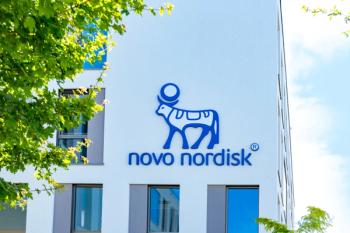
Community Pharmacies and Health Equity: Q&A with Jude Dieterman
The CEO of Outcomes discusses how local pharmacies are playing an important role in improving health equity.
Jude Dieterman, CEO of Outcomes, spoke with Pharmaceutical Executive about the role local pharmacies are playing in improving health equity issues. According to him, these local establishments can have a significant positive impact.
Pharmaceutical Executive: Can you describe the work you’ve been doing at Outcomes?
Dieterman: We’ve been really busy over the past few years looking into how to build out this business to really focus on pharmacy, the cornerstone of care in the community. We give over $145 million back to the pharmacies for doing clinical work. We’re finding ways for more opportunities for the pharmacy to differentiate and stay afloat.
PE: What are the problems that patients are facing at the pharmacy level due to health equity problems?
Dieterman: With COVID, people went to the pharmacists first to get their meds, looking for lower costs and trying to get an understanding about what would happen if they took one medication versus another. Now, it’s hard to see a doctor. More people are ending up in urgent care because primary care physicians are booked six to 12 months out. With the vaccines that have been going to pharmacies, people are getting those from the pharmacist as well. People are seeing that the pharmacist has a clinical background and can do some testing services. Patients are seeing this as a local person that they know well that they can see day in and day out. They can have a regular conversation with them without standing in line or going to a waiting room. They’re starting to open up a lot more to pharmacists.
PE: Does this leave pharmacists well positioned to make improvements?
Dieterman: If you think about it, the pharmacist sees the full list of a patient’s meds. They usually know people socially as well as economically, and they can help drive behavior. For example, they can help drive testing for diabetics and provide help with the testing as well. There’s an opportunity there.
With people being on more meds, they have more questions. You don’t get a lot of information from the doctor, and people don’t always remember everything the doctor says and it’s hard to get an answer again. You go to a pharmacist to get that answer. We’ve seen more and more of that happening. In addition, our pharmacies are working more with longer form care, where individuals are getting nine to 12 pills a month. With elderly patients, if they get messed up on meds, it’s a very serious problem. Pharmacists are in a better position to help prevent that from happening.
PE: Have you noticed a difference between the relationships people have with mom & pop pharmacies compared to corporate-owned pharmacies?
Dieterman: When you look at just the data of people doing these services through our systems, it was mostly driven at the big box stores a few years back. This happened at the call centers and central locations. Today, the data shows that about 60% of independent pharmacies are doing clinical work now. A lot of them do it consistently.
What we’ve seen on the other side with the corporate-owned pharmacies is that they’re scaling back a bit with the number of stores they have. You can see the pressures they have with staffing. We’ve seen a nice pick up on the local, community locations. I think it’s going to balance out, both types of pharmacies need to do clinical work to make the system successful for the patients. It’s not that one needs to win and the other doesn’t. There’s enough population to cover all of it. It’s nice to see the mom & pops step up and do more and more.
PE: What are the ways that pharmacies can partner with payers to improve the situation?
Deiterman: It’s hard to go up Blue Cross or another one of the big companies and ask for a program. That’s where we come in. We can negotiate with the payers on a national level and then bring the programs down to the pharmacies. We can represent a larger network based on where the patients are. If we know that patients are going to a specific pharmacy, we can make sure that records go to the right place.
Unfortunately, it’s hard for pharmacies to do individually. That’s why we must do it at scale and bring it to them. That’s not just for the payers, it’s also for pharma. When new drugs come out, the question is how to get them to the patient. Can the people that need them afford the drug? Do they have access to the drug? There are programs that we can work directly with pharma companies and then bring directly to pharmacies to make sure those meds are getting to the people that need them.
Newsletter
Lead with insight with the Pharmaceutical Executive newsletter, featuring strategic analysis, leadership trends, and market intelligence for biopharma decision-makers.





